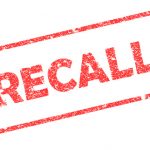Food recalls are not 100% avoidable, and they are costly. The hit to an individual food company or retailer, on average, can run to tens of millions of dollars. Annually, millions of consumers become ill as a result of contaminated food products, and the dollar costs in terms of lost productivity, medical treatment and deaths run into the tens of billions.1 More than 20% of consumers have said that they would not purchase any brands from a company suffering a food recall.2 At best, damage to a company’s brand and reputation could take a long time to repair. Clearly, the need to prevent food contamination is obvious and should be the ultimate goal of all food safety professionals.
But despite the best industry efforts, recalls inevitably occur. And since they aren’t 100% avoidable, suppliers and retailers must continue to look for ways to minimize the safety and financial impact of the recall events that do occur. It’s good to begin that process by understanding some statistics surrounding the most common recalls. Globally, 46% of food recalls are for chemical hazards or the introduction of non-food-grade ingredients. 79% of these are due to undeclared allergens. 26% of recalls are for food-borne pathogens, and 8% are due to physical hazards (metal, glass, plastic, paper, wood, etc.). The remaining 20% are generally quality-based recalls and withdrawals.3
Head Off Recalls Before They Occur
Knowing the numbers helps suppliers and retailers home in on their most likely problem areas and get a leg up on potential product contamination problems. Since chemical hazards are the single biggest culprit, and because most of these instances are due to allergens, food companies should closely examine their cleaning and sanitation practices during production line changeovers. Keep in mind the potential role of contract service providers as sources of adulteration. Regarding pathogens, evaluate raw and ready-to-eat segregation procedures, staff access points, and good manufacturing practices and employee traffic patterns.
Many companies focus their efforts on passing food safety certification audits, but faithful adherence to food safety measures just to pass an audit misses the point. Focus on the development and implementation of comprehensive food safety systems to guard against contamination and food safety incidents, and not just avoid non-conformances to certification codes. Preventing food safety incidents and recalls before they happen must be the priority.
Supplier Best Practice: The Mock Trace
Manufacturers, suppliers and certification bodies have evolved a set of best-practice recommendations that will go a long way toward reducing the number of food safety incidents and recalls. These include conducting regular internal audits of food safety plans and procedures, including approved supplier programs and environmental monitoring programs, both to re-evaluate their effectiveness and discover new or previously overlooked gaps.
Suppliers should consider taking things to the next level. SQFI’s LeAnn Chuboff suggests that suppliers “make their retailers happy” through the use of mock trace exercises.3 These “dry runs” are invaluable for reinforcing the close examination and evaluation of recall plans and to become intimately familiar with the necessary procedures in the event of an actual adulteration event. Mock trace exercises should be intensive: They are particularly effective in identifying gaps when they occur during off shifts. Making the exercise challenging rather than check-the-box easy helps companies reveal and close critical gaps. Conduct the mock trace in both directions, from raw materials to finished goods, and vice versa.
Include every department in the company. For mock trace exercises to be completely effective, review all documentation for errors or omissions. All employees should be interviewed to determine whether they fully understand food safety and documentation procedures. Review training modules and observe manufacturing procedures for evidence of knowledge or operational gaps. Examine bulk material receiving and storage, employee and material traffic patterns, packaging materials and procedures, and cleaning and maintenance chemicals.
Speed as well as accuracy and thoroughness are critical in the event of an actual recall event. Companies should practice rapid response. Take advantage of all the accumulated experiences from the mock exercise to improve every aspect of the company’s food contamination response tools and practices.









